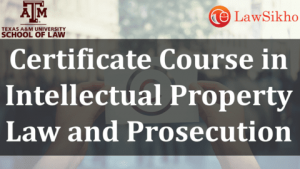This article is written by Vaishnavi C. Gowda who is pursuing a Certificate Course in Intellectual Property Law and Prosecution from Lawsikho.
Table of Contents
What was the controversy related to Ghoomar?
The movie ‘Padmaavat’ (which was earlier named as ‘Padmavati’), which is based on an epic poem of the same name by Malik Muhammad Jayasi, takes us back to the 14th century where a Muslim Emperor Alauddin Khilji, smitten by the beauty of the Hindu Rajput Queen, Padmavati, attacks her kingdom to claim her. The movie cast Deepika Padukone, Ranveer Singh, and Shahid Kapoor in the lead roles.
However, while the movie was still being shot, there was a rumour alleging that the movie includes an intimate scene in which the Muslim king dreams of becoming intimate with the Hindu queen. Another point of conflict was a dance in the movie’s song – Ghoomar which caused the Karni Sena, Rajput caste organizations, Rajput community and royals and former royals from Rajasthan to protest and call for a ban on the movie despite being expressly stated, by the Director Sanjay Leela Bhansali, that such scene does not exist in the film at all.
Ghoomar is a traditional Rajasthani folk dance that is typically performed by women during gatherings. However, a woman’s body named Kshatrani Sankalp stated that the queen is shown to be performing the ghoomar dance in indecent clothes which was a faulty portrayal of Rajputs. They, also, further stated that a Rajput queen would never perform before an audience or bare her midriff and as such, history cannot be played with.
Rani Padmini who was known for her beauty and intelligence, during her time, was later elevated to goddesshood after her Jauhar (mass self-immolation) to escape capture by Khilji. In a country where history passed down through generations and memory shape belief, a depiction or picturization digressing from this is taken as an insult.
Thus, any image of Khilji within proximity of Rani Padmini is taken as an insult not only to her but also to the community, identity, and self-perception designed over centuries of storytelling and re-telling. It was due to this reason that people of Rajasthan, particularly the Rajput clan, were offended by the way the story was allegedly being portrayed.
What is TCE and Moral Right?
Traditional Cultural Expressions (TCEs), which are also known as expressions of folklore’ may be regarded as an expression of traditional culture. This can be expressed verbally (folk tales/poetry/riddles, signs, symbols, words, indications, etc.), musically (folk songs, instruments, etc.), by actions (folk dances, plays, rituals, etc. whether it has been reduced to material form or not) or even by tangible means (productions of folk art in the form of drawings, paintings, sculptures, pottery, carvings, costumes, woodworks, etc.). TCE is generally passed down from generation to generation and embodies the identity and heritage of a community.
‘Moral right’ is the author’s/creator’s right to paternity and integrity. Where Right to Paternity includes the author’s right to claim authorship over his work and seek attribution for the same and the Right to Integrity allows him to restrain or claim damages in case of distortion, mutation, modification or any such act which is prejudicial to his honour or reputation. Such right, under the Copyright Act, extends to literary, artistic, musical and dramatic works as well as cinematograph films.
Is TCE granted protection under Indian Law?
While there is no specific provision under the laws in India for protection for TCEs, there are provisions under various legislations which, directly or indirectly, may be considered as governing TCEs. They are as follows:-
The Constitution of India, 1949:
Article 29 (1)
Article 29 (1) recognizes and intends to protect the interests of minorities by providing that all citizen groups residing in India having a distinct culture, language, and script, have the fundamental right to conserve their culture and language. This right is absolute and there are no ‘reasonable restrictions in the interest of the general public here. However, this protection is granted exclusively to minorities, thereby overlooking those communities that do not qualify as minorities or those that are less prominent.
Article 51A (f)
Article 51A (f) imposes a fundamental duty on every citizen of India to value, preserve and protect the rich heritage of India’s composite culture. The TCE and folklore, very well, represent the culture and heritage of India.
The Copyright Act, 1957:
Interpretation of the definitions of artistic, literary, musical and dramatic works, author, performance and performers and so on, would incorporate works that come under the purview of TCE (Section 2).
Provisions related to copyright in case of Compulsory licensing of published/unpublished work of deceased or unknown authors (section 31-A) and performer’s rights (section 38) can be understood to be an extension of the interests of the TCE owner.
In furtherance to the aforementioned provisions, Section 57 of the Copyright Act, 1957 provides for the author’s special rights (also known as “moral rights”), as explained above, can also be understood to be an extension of interests of the TCE owner.
However, the provisions of this Act are specific to authors, with emphasis on the fact of individuality. These provisions cater well to those TCEs where there is an identifiable or unknown individual to protect and own what is rightfully his. The Act stresses the concept of “authorship”.
Thus, the Act (and the underlying concept) is beneficial in protecting the modern TCEs but not those pre-existing works, history or literature because they owe their ownership to a community because there is no one author for the same. As such, in the present day, it falls into the public domain and hence loses the characteristics of originality or individuality.
Additionally, the protection under the Act is granted for a particular period of time, after which even the TCEs so protected, will fall into the public domain. The very essence of TCEs is that their existence dates back centuries and hence, cannot fall into the public domain like copyright.
The Geographical Indications Act, 1999
The Geographical Indications Act, 1999 was enacted in accordance with the TRIPS and recognized GI as a community right and hence, this legislation is relied upon by traditional communities to protect and safeguard the rights of the goods characteristic to the geographical area. This is one form of protection granted to TCEs since GI embodies ancient culture.
Trade Marks Act, 1999
Under the Trade Marks Act, 1999, Registered Trademarks of traditional goods can be protected against infringement and passing off while Certification and Collective marks can be used to protect and create a brand image for the traditional goods where they have cultural importance.
What is the effect and consequence of a faulty portrayal of TCE?
Since TCEs are an intrinsic feature of the cultural and social identity of a particular community, a representation made, in any form, by an outsider to that community is taken as an insult by such community. It is seen as disparaging and disrespectful towards the tradition and culture that has been so meticulously preserved by the folks for generations.
Even if there are multiple versions of a TCE existing, the version that is imparted among generations of the local community is what reigns over any other version. Any diversion from this version is untrue and considered a falsity and contempt of their culture.
As mentioned in the preceding paragraphs, particular forms of TCE are safeguarded and protected under the various legislations and hence, any distortion, unauthorized use or infringement are legally punishable under the respective legislations. This is pertaining to those instances expressly aforementioned.
There is a need to enact separate legislation for the protection of TCEs, specifically “expression of folklore” which would bring under its ambit those aspects over which a community has ownership and no single person or author. While, in a situation like the present case where Rajputs were hurt with the portrayal of their beloved Queen and culture, relief may be sought under the Constitutional provisions previously mentioned (i.e., Articles 29(1) and 51-A(f)), the community must still prove that they are a minority and the duty lies upon the citizens of the country to preserve such heritage, such a community took it upon themselves, literally, to prevent their culture from being tarnished.
Is it not necessary, then, to enact a sui generis law specifically to protect the ‘expressions of folklore’ in a country where there is an intermingling of in numerous communities while countries like China and Ecuador have express provisions to protect and safeguard TCE’s and include them under its ambit expressions and adaptations of such folklore.
In doing so, the moral rights of a community must also be recognized as that they are given the rights to claim ownership, restrain or claim damages in cases where there is distortion, mutation, modification or any such act which is prejudicial to the honour or reputation of their community, history, heritage and culture.
Conclusion
When TCEs are to be portrayed by someone outside that community or group, moral rights come into the picture wherein creative expression and freedom are granted. Each person, including persons from the particular community, perceives an idea in different ways. Hence, even with the same historical knowledge, there may be numerous ways of construing and expressing it in various forms. When the necessary protection and recognition is given to the community as the rightful author, there will be authenticity and accuracy in the depiction of their TCE.
When it is treated as a public domain where any person can access and portray the TCE according to their whims and fancies, it is sure to enrage and offend the particular community associated with it. With express acknowledgement of the ownership of a TCE by the particular community, there is scope for global recognition for, both, the expression and the associated community.
In closing, it is emphasized that a community be recognized as the author/creator so that adequate rights, protections and remedies are endowed upon them so that their tradition and culture can be accurately represented with an intention to maintain the sanctity and prevent dilution or deterioration.
References:
- Padmaavat: Why a Bollywood epic has sparked fierce protests
- Decoding Ghoomar
- ‘Maharanis Never Danced For Anyone’
- https://indianexpress.com/article/opinion/rajputs-karni-sena-history-and-anger-around-padmavatis-purity-and-alauddin-khiljis-sweet-dreams-4937305/
- WIPO – Intellectual Property and Traditional Cultural Expressions
- TCE
- FITM-Protection of Traditional Cultural Expression in India
LawSikho has created a telegram group for exchanging legal knowledge, referrals, and various opportunities. You can click on this link and join:
https://t.me/joinchat/J_0YrBa4IBSHdpuTfQO_sA
Follow us on Instagram and subscribe to our YouTube channel for more amazing legal content.












